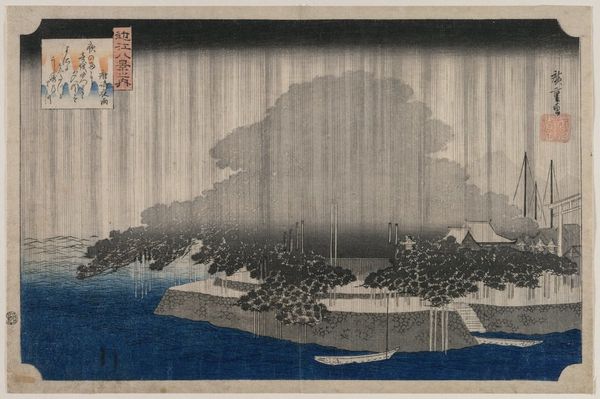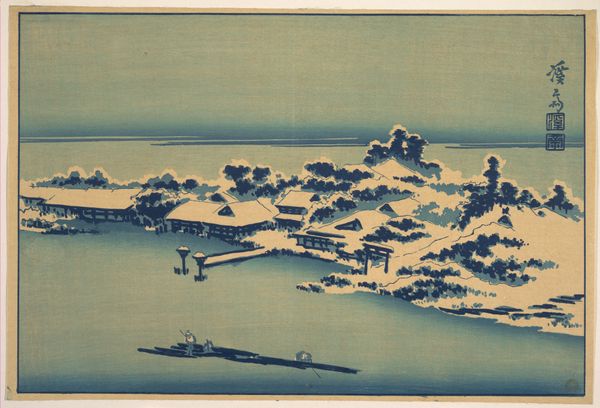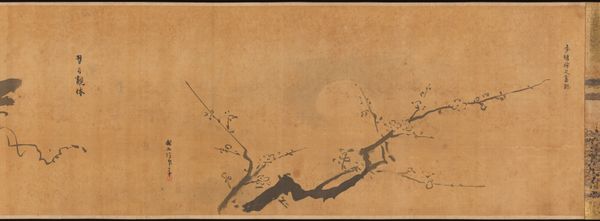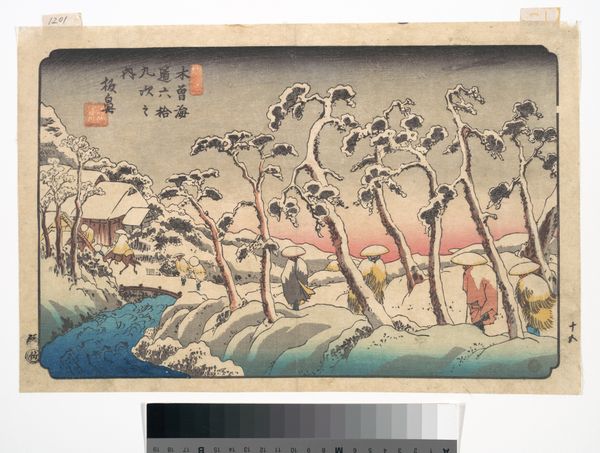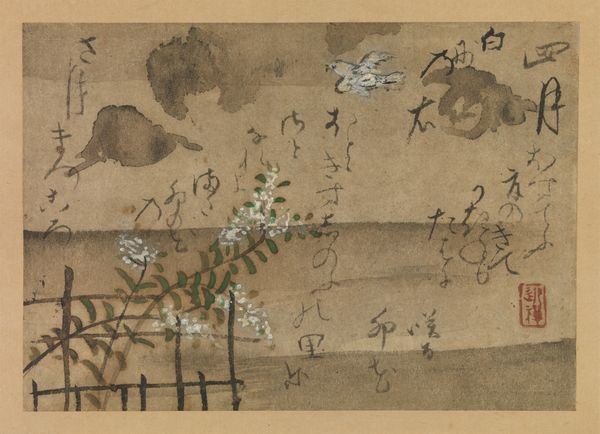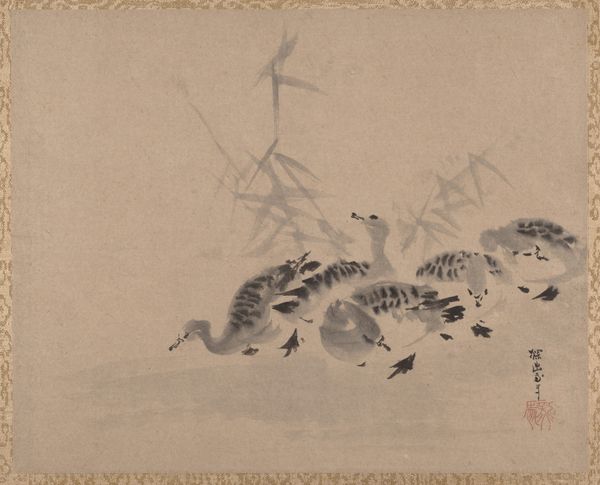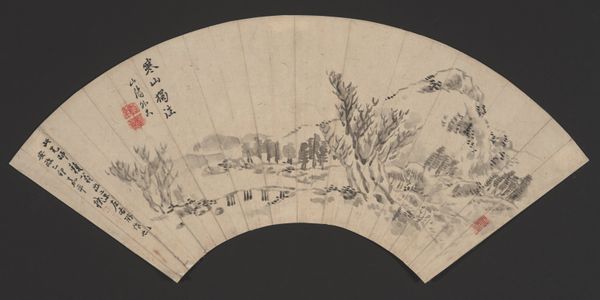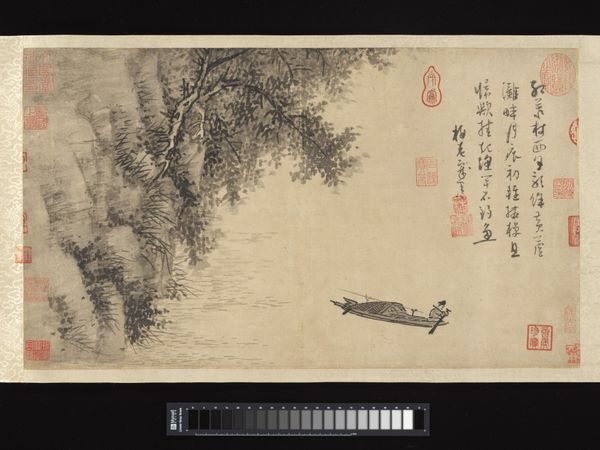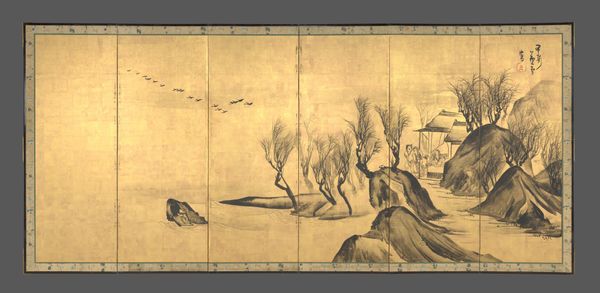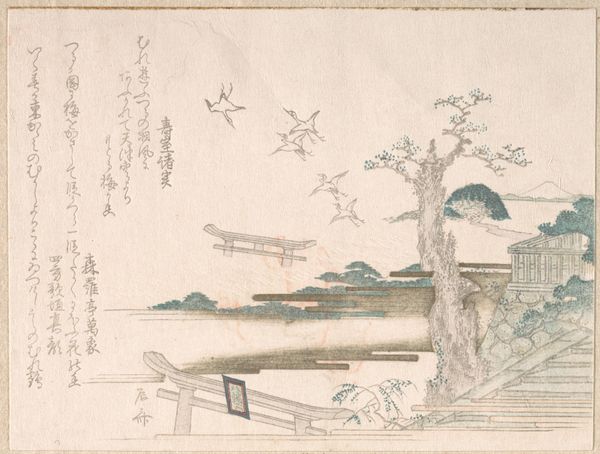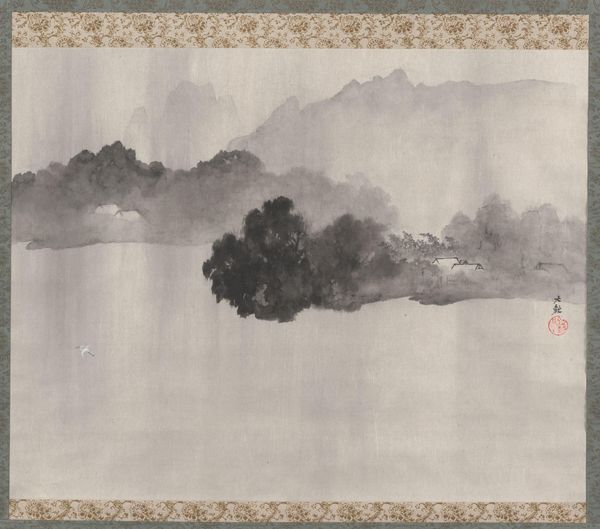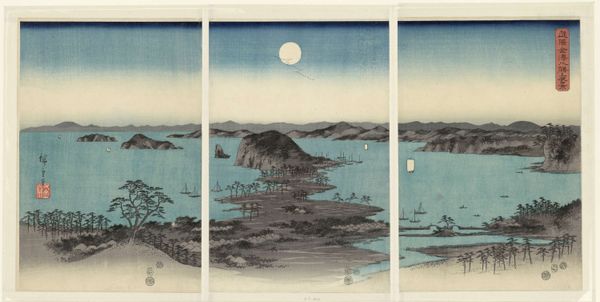
print, ink, woodblock-print
# print
#
asian-art
#
landscape
#
ukiyo-e
#
ink
#
woodblock-print
Dimensions: 11 3/16 x 39 ft. 7/16 in. (28.4 x 1189.9 cm)
Copyright: Public Domain
Curator: Looking at this work, "Happy Improvisations on a Riverboat Journey," a Japanese woodblock print created by Ito Jakuchu between 1757 and 1777, my first reaction is a sense of vastness combined with intimacy. Editor: It strikes me as so incredibly simple, almost austere. The dark expanses of sky contrasted with these delicately rendered details. Is it the product of meticulous labor despite this perceived simplicity? Curator: Absolutely. This ink print exemplifies the Ukiyo-e tradition. We must consider the sociopolitical context of Ukiyo-e art. Mass-produced yet undeniably skillful and aimed at a broad, burgeoning middle class. What message about Japanese identity does this art convey and what statement does it make about their relationship with class during that time? Editor: Agreed. Considering the woodblock print process alone gives it that socio-political complexity that helps dismantle preconceived ideas about “fine art”. The crafting and distribution speaks volumes. Curator: And let's consider how such a "low" art form represents an incredibly classist culture and how the culture's hierarchy functions to keep women, queer folk, and persons of color disenfranchised to serve capitalistic values. The work shows the river journey, likely for leisure. And this opens doors for looking at questions of tourism, privilege and leisure through class lines. Editor: The horizontal format further emphasizes this idea. Do you think the relative simplicity of its monochrome palette makes us focus on its structure and materials? Curator: It directs our eyes toward understanding its place in society. How was the labor divided in the print shop? Who profited, and who didn't? How did the consumption of this image reinforce existing power structures? It makes us consider class structures, identity, and political forces from all angles. Editor: Very true. Understanding the materials and their mode of deployment within its historical period gives the image a deeper connection with social realities. Curator: By intertwining Ukiyo-e aesthetics, like those exemplified in the print, with the reality of society we confront the power dynamics at play during the era this art comes from. Editor: Indeed. So much richness extracted from ink on paper. It is rewarding to bring in its labor and historical implications as we look at it.
Comments
No comments
Be the first to comment and join the conversation on the ultimate creative platform.
